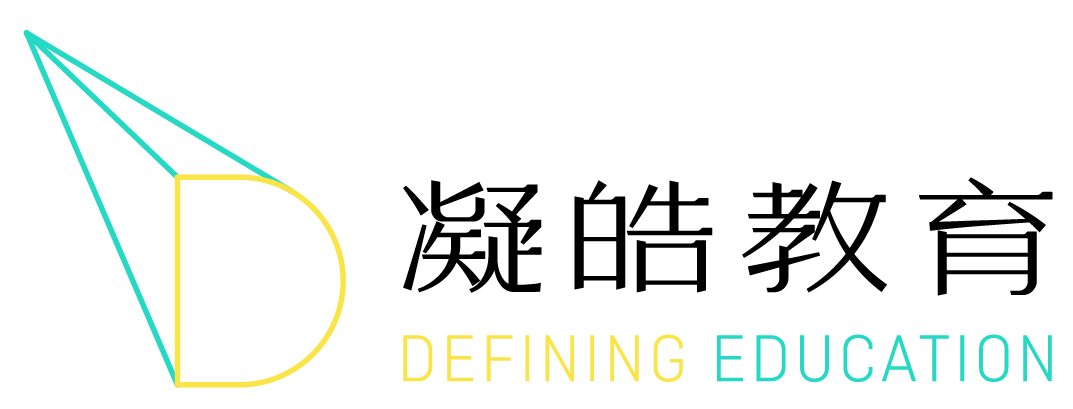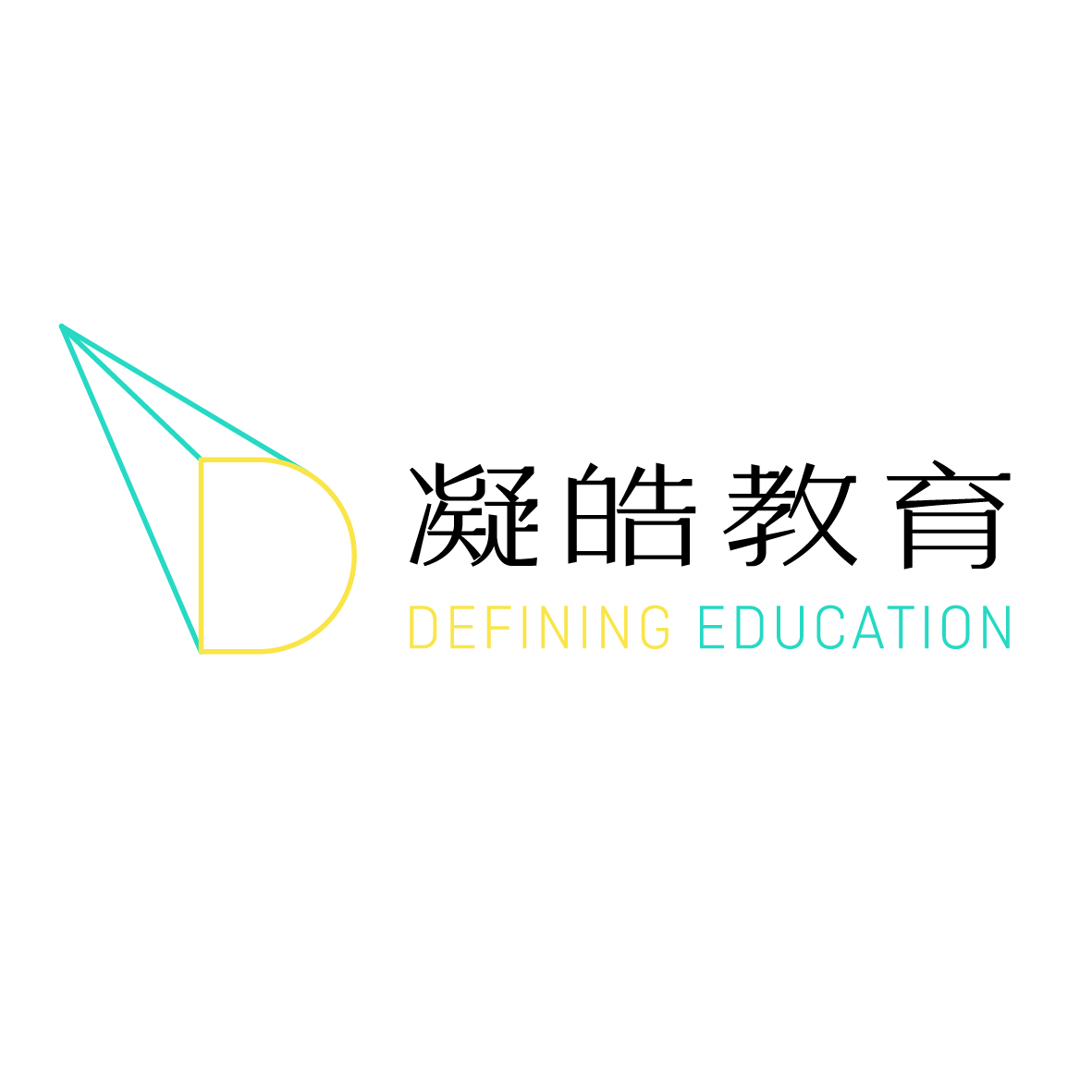16 九月 【Expository Essay格式】DSE英文Expository Essay全攻略
在英文寫作學習中,學生經常遇到的難題之一就是如何掌握essay的正確格式。一篇好的文章不僅需要語言準確,還需要結構清晰、邏輯嚴謹。當中expository essay(說明文)和 expository writing(說明性寫作)是最常見,是考試和學術寫作中不可或缺的類型。本文將深入探討這些寫作技巧,幫助學生全面掌握寫作能力。
Expository Essay DSE經常出現?
無錯!Expository Essay確實經常出現在DSE英文考試中!
根據過去十年的DSE試題分析,expository essay在以下情況下頻繁出現:
Paper 2 寫作部分
- Part B部分的題目要求expository writing
- 常見主題包括:科技影響、環境問題、教育議題、社會現象
Paper 3 綜合能力部分
- Data file題型經常要求學生撰寫說明性文章
- 需要整合聽力材料和閱讀材料進行expository writing
Expository Essay特點
四大核心特點
- Objectivity(客觀性)
- 以事實和數據為基礎
- 避免個人情感或主觀意見
- 保持中性、公正的立場
- Clarity(清晰性)
- 使用簡潔明瞭的語言表達
- 邏輯結構清楚易懂
- 避免模糊或歧義的表達
- Evidence-based(證據導向)
- 豐富的事實資料支撐
- 可信的統計數據引用
- 權威專家觀點參考
- Well-structured(結構完整)
- 清晰的三段式結構
- 段落間邏輯連貫
- 有效的過渡連接
Expository Essay格式
標準Structure框架
【Introduction 引言】
Hook + Background + Thesis Statement
【Body Paragraph 1 主體段落一】
Topic Sentence + Supporting Evidence + Analysis + Transition
【Body Paragraph 2 主體段落二】
Topic Sentence + Supporting Evidence + Analysis + Transition
【Body Paragraph 3 主體段落三】
Topic Sentence + Supporting Evidence + Analysis + Transition
【Conclusion 結論】
Summary + Restatement + Final Thought
各部分篇幅分配建議
根據DSE字數要求(400-600字),建議分配如下:
- Introduction: 80-100字(約15-20%)
- Body Paragraphs: 240-360字(約60-70%)
- Conclusion: 80-120字(約15-20%)
Expository Essay寫作清單
寫作前檢查清單
選題準備階段:
- 確認題目要求和寫作目的
- 收集相關事實和數據資料
- 制定清晰的文章大綱
- 確定主要論點和支撐證據
寫作過程檢查:
引言部分(Introduction):
- 是否有吸引讀者的開場?
- 背景資訊是否充分?
- 論文陳述是否明確具體?
- 是否預告了文章的主要內容?
主體段落(Body Paragraphs):
- 每段是否有清晰的主題句?
- 支撐證據是否充分可信?
- 解釋分析是否深入透徹?
- 段落間過渡是否自然流暢?
- 是否保持客觀中立的語調?
結論部分(Conclusion):
- 是否有效總結主要觀點?
- 重申論文陳述是否恰當?
- 結語思考是否發人深省?
語言風格檢查:
- 用詞是否正式得體?
- 語法結構是否正確?
- 句式變化是否豐富?
- 整體語調是否一致?
Expository Essay Opening Introduction引言/前言寫法
三步驟完美引言法
Step 1: Hook(開場鈎子)
統計震撼開場法 (Statistic Shock Opening):
Every year, more than 8 million tons of plastic waste flow into the ocean — equivalent to dumping a garbage truck full of plastic every single minute.
疑問引導開場法 (Question-Led Opening):
Have you ever wondered why Hong Kong students rank among the top in Asia for English proficiency, yet their creative writing skills remain relatively weak?
情境描述開場法 (Scenario Description Opening):
Imagine walking into a school fully managed by artificial intelligence, where all course content is personalized according to each student’s unique learning style.
Step 2: Background Information(背景資訊)
Provide readers with the essential knowledge needed to understand the topic:
Since the widespread adoption of smartphones in 2010, teenagers’ learning patterns have undergone fundamental changes. Traditional classroom teaching methods are facing unprecedented challenges, and educators need to rethink how to effectively deliver knowledge in the digital age.
Step 3: Thesis Statement(論文陳述)
Clearly and specifically state the central argument of the essay:
This essay will explore the three major impacts of technology on modern education: the personalization of learning methods, the transformation of teacher-student interactions, and the innovative development of assessment approaches.
完整引言Example
According to UNESCO statistics, over 1.6 billion students worldwide were affected by school closures during the COVID-19 pandemic, fundamentally altering the landscape of education. This unprecedented disruption accelerated the adoption of digital learning technologies and forced educators to reimagine traditional teaching methods. The shift towards online learning platforms, virtual classrooms, and digital assessment tools has revealed both opportunities and challenges in modern education. This essay will examine how technology has transformed contemporary education through three key aspects: the personalization of learning experiences, the evolution of teacher-student interactions, and the innovation in assessment methodologies.
Expository Essay Body正文寫法
TEEL方法論
每個主體段落都應該遵循 TEEL structure:
T – Topic Sentence(主題句) 清晰表達該段的中心思想
E – Evidence(證據) 提供具體的事實、數據或研究結果
E – Explanation(解釋) 詳細分析證據如何支持你的論點
L – Link(連接) 與下一段或整體論述建立聯繫
主體段落寫法Example
主體段落一:學習個人化
Modern technology has enabled unprecedented personalization in educational experiences, allowing students to learn at their own pace and according to their individual strengths. According to a 2024 study conducted by Hong Kong University of Education, adaptive learning platforms can improve student performance by up to 35% compared to traditional one-size-fits-all approaches. These platforms use artificial intelligence algorithms to analyze student responses and adjust content difficulty in real-time, ensuring optimal learning progression. For instance, a student struggling with mathematical concepts can receive additional practice problems and alternative explanations, while advanced learners can access enrichment materials. This personalized approach not only enhances academic achievement but also boosts student confidence and motivation. As educational technology continues to evolve, the potential for truly individualized learning experiences becomes increasingly achievable.
主體段落二:師生互動模式轉變
The integration of digital tools has fundamentally transformed the dynamics of teacher-student interactions, creating more collaborative and interactive learning environments. Virtual classrooms now facilitate real-time discussions through chat functions, breakout rooms, and collaborative documents, enabling shy students to participate more actively than in traditional settings. Research from the Education University of Hong Kong indicates that 73% of students report feeling more comfortable asking questions in digital environments. Teachers have evolved from information deliverers to learning facilitators, guiding students through online resources and fostering critical thinking skills. Interactive whiteboards, multimedia presentations, and gamified learning platforms have made lessons more engaging and memorable. However, this transformation also requires educators to develop new technological competencies and adapt their pedagogical approaches. The shift represents a fundamental reimagining of the educational relationship, emphasizing collaboration over instruction.
有效過渡詞語運用
表示遞進關係:
- Furthermore, Moreover, Additionally, In addition to
表示因果關係:
- Consequently, As a result, Therefore, Hence
表示對比關係:
- However, Nevertheless, In contrast, On the contrary
表示舉例說明:
- For instance, To illustrate, Specifically, In particular
Expository Essay Conclusion結尾/結語/總結寫法
三層次結論Structure
Layer 1: 核心要點總結 簡潔地重述文章的主要論點
Layer 2: 論文陳述重申 用不同的語言重新表達thesis statement
Layer 3: 深度思考或展望 提供更廣泛的思考角度或未來展望
六種結尾寫法Example
- 重申總結式結尾
In conclusion, the evidence presented clearly demonstrates that technology has revolutionized education through personalized learning experiences, transformed teacher-student interactions, and introduced innovative assessment methods. These changes represent a fundamental shift towards more effective and engaging educational practices.
- 前瞻展望式結尾
As we look towards the future, the integration of artificial intelligence, virtual reality, and blockchain technology promises to further transform educational landscapes. The next decade will likely witness even more revolutionary changes in how knowledge is transmitted and acquired.
- 行動呼籲式結尾
Given these significant developments, it is imperative that educators, policymakers, and students actively embrace technological innovations while maintaining the human elements that make education meaningful and transformative.
- 哲學思辨式結尾
Ultimately, the true measure of educational technology’s success lies not in its sophistication, but in its ability to nurture critical thinking, creativity, and human connection in an increasingly digital world.
- 警示提醒式結尾
While technology offers immense potential for educational advancement, we must remain vigilant about maintaining balance and ensuring that digital tools enhance rather than replace fundamental human learning experiences.
- 圓形回應式結尾
Returning to our initial question about technology’s role in education, the evidence suggests that we are witnessing not just a technological revolution, but a fundamental reimagining of how humans learn and grow.
進階Expository Writing技巧
語言提升策略
詞彙層次提升:
- 基礎詞 → 高級詞:big → substantial/significant
- 口語化 → 正式化:a lot of → numerous/considerable
- 模糊詞 → 精確詞:things → factors/aspects/elements
句式變化技巧:
- 簡單句 + 複合句 + 複雜句的組合運用
- 適當使用被動語態增加正式感
- 運用分詞結構和修飾語豐富表達
常見錯誤避免
內容方面:
- ❌ 加入過多個人觀點和情感色彩
- ✅ 保持客觀中立的立場和語調
結構方面:
- ❌ 段落缺乏明確的主題句
- ✅ 每段開頭都有清晰的topic sentence
語言方面:
- ❌ 過度使用口語化表達
- ✅ 採用學術正式的書面語
時間管理與應試策略
DSE考試時間分配
規劃階段(10分鐘):
- 分析題目要求:3分鐘
- 構思大綱結構:4分鐘
- 收集論點證據:3分鐘
寫作階段(65分鐘):
- 引言段:15分鐘
- 主體段落:40分鐘(每段約13分鐘)
- 結論段:10分鐘
檢查階段(15分鐘):
- 內容邏輯檢查:8分鐘
- 語法錯誤修正:7分鐘
實戰答題技巧
審題技巧:
- 圈出關鍵指令詞(explain, describe, analyze)
- 確認文體要求(expository vs. argumentative)
- 注意字數和時間限制
構思技巧:
- 使用 mind map 整理思路
- 先列出三個主要論點
- 為每個論點準備2-3個支撐證據
評分標準深度解析
DSE Expository Essay評分準則
內容與組織(40%):
- 論點是否清晰明確
- 證據是否充分可信
- 結構是否邏輯合理
- 內容是否切題深入
語言運用(40%):
- 詞彙使用是否恰當豐富
- 語法結構是否正確多樣
- 語言風格是否符合文體
溝通效果(20%):
- 表達是否清晰易懂
- 是否能有效傳達信息
- 整體印象是否良好
各等級表現特徵
Level 5**表現:
- 結構完整,邏輯清晰
- 語言豐富,表達流暢
- 內容深入,見解獨到
- 接近沒有語法錯誤
Level 4表現:
- 結構基本完整
- 語言較為恰當
- 內容有一定深度
- 少量語法錯誤
Level 3表現:
- 結構尚算完整
- 語言表達一般
- 內容較為表面
- 有明顯語法錯誤
實用Expository Writing模板
萬能引言模板:
In recent years, [topic] has become increasingly [relevant/important/controversial] in [context]. According to [source], [statistic/fact] demonstrates the significance of this issue. While [common belief/assumption], emerging evidence suggests that [your perspective]. This essay will explore [topic] through [number] key aspects: [aspect 1], [aspect 2], and [aspect 3].
主體段落模板:
[Topic sentence about main point]. Research conducted by [authority/institution] reveals that [evidence/statistic]. This finding is particularly significant because [explanation of importance]. For example, [specific example or case study]. Furthermore, [additional supporting detail]. These factors combine to demonstrate that [conclusion about the point]. Moving forward, it is important to consider [transition to next point].
結論段模板:
In conclusion, the evidence presented demonstrates that [restate main points]. The implications of [topic] extend beyond [immediate context] to affect [broader context]. As we move forward, [future consideration/recommendation]. Ultimately, understanding [topic] is essential for [final thought about importance/relevance].
練習建議與自我提升
階段性練習計劃
第一階段:基礎掌握(2-3週)
- 每日閱讀一篇優秀expository essay
- 分析文章結構和語言特點
- 練習寫作單一段落
第二階段:技巧提升(3-4週)
- 完成完整文章寫作
- 請老師或同學提供feedback
- 針對弱點進行專項練習
第三階段:考試準備(2-3週)
- 限時寫作練習
- 模擬考試環境
- 熟悉各種題型要求
自我評估方法
定期使用以下評估表檢查進步情況:
結構評估:
- 引言是否具備三要素?
- 主體段落是否遵循TEEL格式?
- 結論是否有效總結?
內容評估:
- 論點是否明確具體?
- 證據是否充分可信?
- 分析是否深入透徹?
語言評估:
- 詞彙使用是否多樣化?
- 句式結構是否豐富?
- 語法錯誤是否減少?
總結
掌握 expository essay 格式和寫法是DSE英文科成功的關鍵因素。通過理解其特點、熟練運用標準structure、豐富語言表達,並配合適當的練習策略,必定能在DSE中取得理想成績。expository writing不只是考試技巧,更是未來學習和工作中不可或缺的能力。投資時間掌握這項技能,將為你的學術和職業發展奠定堅實基礎。如果你在提升 expository essay 的過程中感到困惑,不用擔心!
凝皓教育擁有香港最強的英文補習名師團隊,包括牛津精英 Bon Lam、應試策略大師 Calvin Sun、中大語言教育專家 Rita Tsang、全能導師 Alex Leung,以及DSE狀元級導師 Speech Jeh。他們憑藉多年教學經驗與獨家技巧,已經幫助無數學生由合格躍升至5**。想要在DSE英文科中突圍而出,立即了解我們的 專業英文補習課程,讓你的寫作能力全面升級。
專業英文補習名師團隊
凝皓教育匯聚了香港最頂尖的英文補習名師,為學生提供卓越的英語教學:
Bon Lam – 牛津國際語言教育精英
Bon Lam作為香港大學工商管理國際商業及環球管理(BBA IBGM)一級榮譽畢業生,現於世界頂級學府牛津大學(University of Oxford),修讀應用語言學碩士(MSc in Applied Linguistics for Language Teaching)課程的英文補習名師。2012年DSE英文科獲得5**的卓越成績,Bon Lam不僅是學術精英,更是具備豐富職場經驗的英語教育專家。曾任職全球排行第一的美國資產管理公司貝萊德(BlackRock)分析員,他深信英語能力可以改寫人生軌跡。現已教授超過3000名學生,其自創的「Bon English英文學習系統」助學生輕鬆學習英文,YouTube頻道(Bon Lam DSE)影片更累積超過10萬觀看次數。
Calvin Sun – 英文應試策略大師
Calvin Sun被譽為全港頂尖英文科導師的英文補習名師,Calvin Sun擁有港大工商管理及法律雙重背景。他創立的獨特教學方法包括「拆句學」、「命題法」和「Logic Line Analysis」,在歷屆DSE已幫助不同背景的學生取得Lv5以上的驕人成績,不但包括傳統英中各校學生,大量非學霸級學生及重讀生亦成功躋身尖子行列。
Rita Tsang – 中大語言教育專家
Rita Tsang不僅在DSE英文科獲得5**佳績,更有逾十年大型補習教學經驗,深受家長學生歡迎。她畢業於香港中文大學英文系,擁有香港中文大學翻譯碩士,修讀教學英語、戲劇、文學等課程,曾於大學任教University English課程及曾於大專院校任教Academic English課程,教授大學生及大專生閱讀及寫作學術論文的技巧。她的教學風格融合學術深度和實際應用,深受學生歡迎。
Alex Leung – 港大英文全能導師
Alex Leung是畢業於香港大學文學院的英文補習名師,以雙主修English Studies和Chinese Language and Literature而聞名。他更在大學課程中取得A/A-的佳績,IELTS英文測試學術模式雙卷取得最高等滿分9分之成績(7.5分已相約DSE英文卷5**的水準),更被邀為大學課程學生顧問。他的英文課程全面涵蓋聽說讀寫四個範疇,並提供個人化的作文批改服務。
Speech Jeh – 港大一級榮譽文學士・本地雙語研究工作者
Speech Jeh作為香港大學言語及聽覺科學系畢業的註冊言語治療師,於2018年DSE英文科取得Straight 5**佳績,最佳六科達36分。專攻DSE英文教學7年以上,其學生5*比率高達24%,遠超全港平均4.1%。曾助自修生從Level 4躍升至5*,甚至5提升至5**。學生遍佈聖保羅男女中學、拔萃女書院、皇仁書院等頂尖名校。Speech Jeh提供180+頁獨家筆記、5** Vocabulary Bank、全卷Mock Papers及個人化作文批改服務,配合Oral實戰訓練和個人化Evaluation Session,打造最強5**資源配套。

